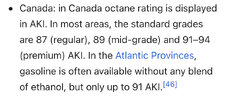007
Member
I’ve been running premium (no ethanol) with a bit of Seafoam in my 81 Goldwing for the past 7 years.
What is the suggested fuel I should be using in my 2021 NC750x?
Thanks
007
What is the suggested fuel I should be using in my 2021 NC750x?
Thanks
007



